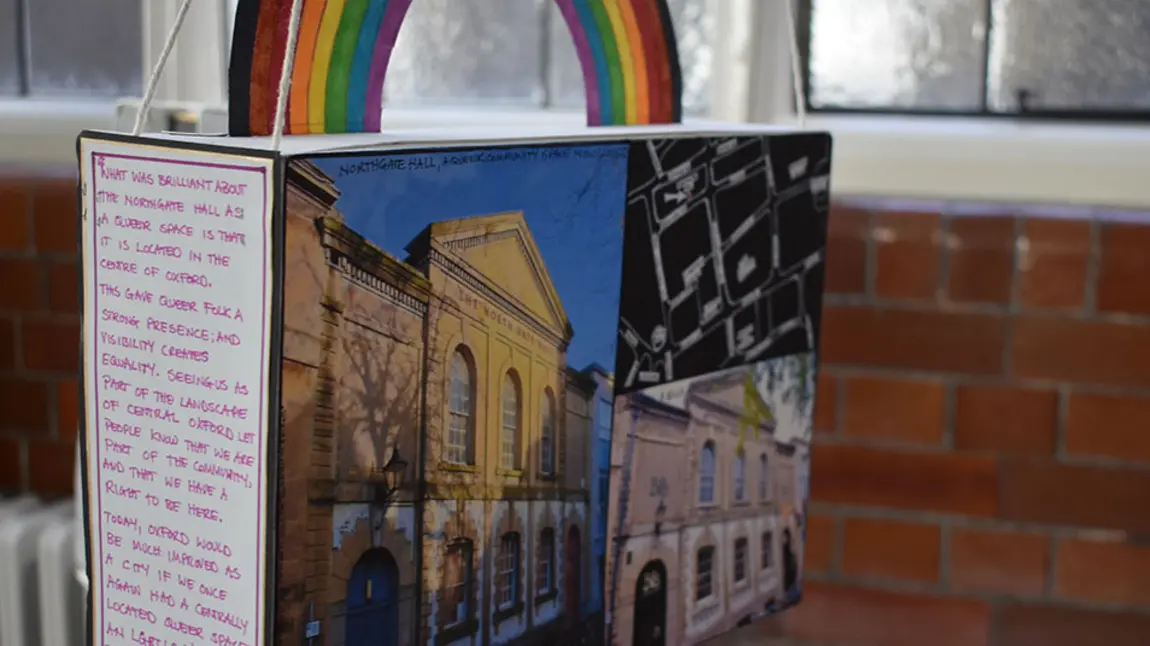Museum of Oxford wins Sustainable Project of the Year

The Museum of Oxford is the inaugural winner of The National Lottery Heritage Fund-sponsored Sustainable Project of the Year Award at the Museums + Heritage Awards.
The museum’s exhibition, Queering Spires: a history of LGBTIQA+ spaces in Oxford, was recognised for its efforts in sustainably sourcing materials, reducing waste and carbon emissions and its use of socially responsible suppliers.
“This is such an important issue for us, and indeed the sector, right now more than ever."
Ros Kerslake, Chief Executive of The National Lottery Heritage Fund
Marta Lomza, Community Engagement Officer at the Museum of Oxford said: “The Queering Spires exhibition was curated by a steering group of people from our local LGBTIQA+ communities, and was centred around the theme of ‘queer spaces’.
“The interactive elements of this exhibition created new layers of meanings and allowed for a kind of an intergenerational conversation to happen. It really felt like we were putting a spotlight on some ‘hidden histories’.”
Museums + Heritage Awards 2020
Watch Marta's acceptance speech:
"I'm so pleased to hear we won. It just makes me even more inspired to keep doing this!"
Marta Lomza, Community Engagement Officer at the Museum of Oxford
Our Chief Executive, Ros Kerslake, who announced the Museum of Oxford as the winner at the online Museums + Heritage Awards ceremony, explained that The Fund sponsored the award because we recognise the importance of making sustainable practices the norm within the heritage sector.
“This is such an important issue for us, and indeed the sector, right now more than ever."
Ros agreed with the judges’ comments on the Queering Spires exhibition: “The judges said that they were really impressed that sustainability was at the very heart of this project. They recommend it as a model which can be replicated across the sector.”
The Natural History Museum at Tring's self-sustaining ornithological building was also highly commended by the judges.
What the Museum of Oxford did to win
The majority of the items used in Queering Spires were borrowed or reused from previous exhibitions and the museum’s stock.
The museum used recycled and second-hand materials within arts pieces. They also used items made from materials such bamboo and glass, which could be used again or recycled.
They avoided having items delivered (such as printed materials), by collecting them using sustainable transport (bikes and buses). When this wasn’t feasible, the museum used an eco-friendly, low emissions taxi service instead.
Additional items for Queering Spires were purchased from ethical and charitable organisations within Oxford. This included an organisation eliminating homelessness within the city, a social enterprise helping the local community with employment, and a local eco-friendly printer.
The benefits of going green
Marta explained that it wasn’t just the environment that benefited from their creation of a sustainable exhibition.
“There were some financial savings where we borrowed or bought second-hand items. It also felt like we were sowing seeds for new relationships with local, socially responsible businesses. Waste and CO2 emissions from transport were minimised, and most of the money went into local businesses rather than big international companies.
“We all need to try and be more sustainable across all our activities, given the extent of the climate emergency."
Marta Lomza
“We now know it’s possible to have sustainability at the heart of exhibition curating, so we will make sure we hold ourselves to that standard and keep pushing our own boundaries.”
Leading the way

For other heritage organisations looking to improve the sustainability of their own exhibitions, Marta offered the following advice: “Before you start the project, ask yourself what ‘sustainability’ means to you in this particular context. What are the areas you have control over which you can improve? Tailor your actions to your staff resources – if you’re a small organisation, maybe focus on one aspect. And don’t beat yourself up if you can’t ensure absolutely everything is ‘green’.
“We all need to try and be more sustainable across all our activities, given the extent of the climate emergency. It’s a challenge but also an interesting journey where we can all learn so much. And learning is what museums are all about, after all.”


